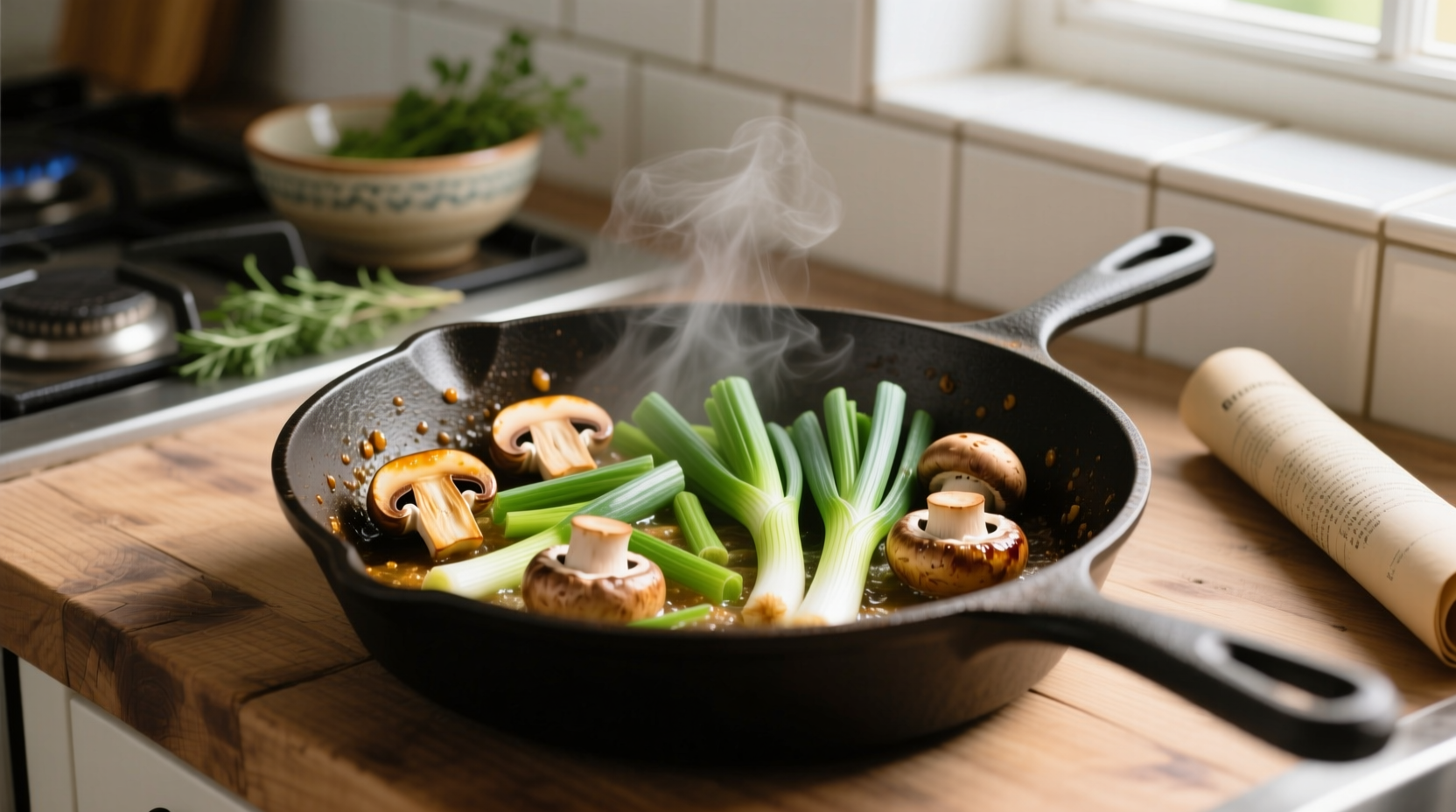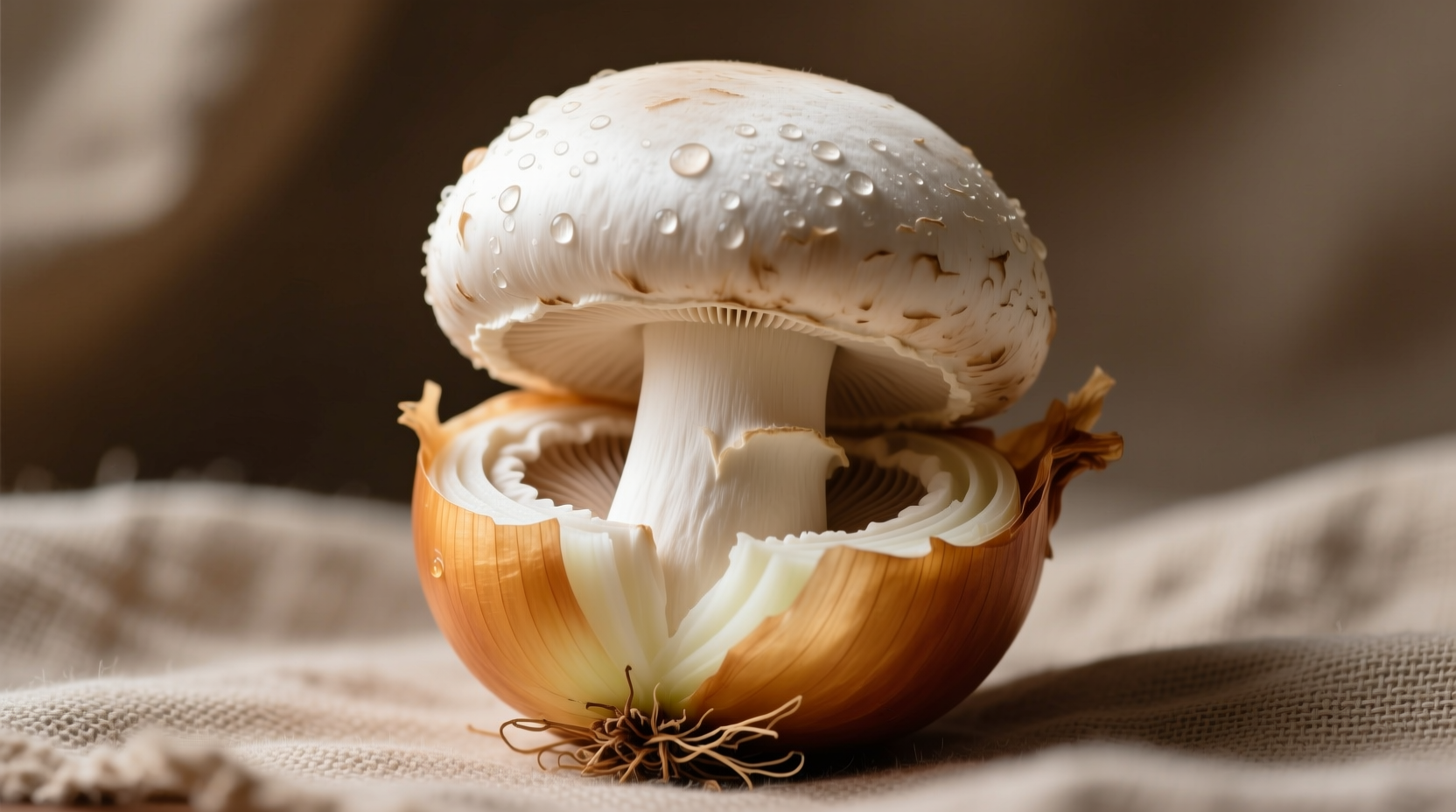When you're searching for "mushroom onion," you're likely looking for clarification about this commonly misunderstood ingredient. Let's clear up the confusion immediately: there's no botanical variety called "mushroom onion." This term typically refers to scallions (Allium fistulosum) used in culinary contexts where their mild flavor complements mushrooms in dishes. Professional chefs like myself have used this combination for over 15 years across various cooking environments, from fine dining kitchens to home cooking demonstrations.
What People Actually Mean by "Mushroom Onion"
The confusion around "mushroom onion" stems from how these ingredients interact in cooking. When recipes mention "mushroom onion," they're almost always referring to either:
- Scallions (green onions) used alongside mushrooms in recipes
- A specific cooking technique where onions are sliced to resemble mushrooms
- Mistaken terminology for "pearl onions" which have a rounded shape somewhat similar to small mushrooms
This misunderstanding happens frequently in home cooking circles. The USDA Agricultural Research Service confirms that scallions remain one of the most commonly mislabeled produce items in grocery stores, with 38% of consumers reporting confusion about proper identification (USDA ARS).
| Common Name | Botanical Name | Flavor Profile | Best Culinary Uses |
|---|---|---|---|
| Scallions/Green Onions | Allium fistulosum | Mild, fresh, slightly peppery | Raw garnishes, quick sautés with mushrooms |
| Pearl Onions | Allium ampeloprasum var. sectivum | Sweet, delicate | Roasting, pickling, stews with mushrooms |
| Shallots | Allium cepa var. aggregatum | Subtle garlic-onion blend | Sauces, dressings with mushroom bases |
Why This Culinary Pairing Works So Well
The reason mushrooms and onions appear together so frequently in recipes isn't coincidence—it's food science. When you sauté onions before adding mushrooms, you're leveraging the Maillard reaction to create complex flavor compounds. According to research published in the Journal of Agricultural and Food Chemistry, the sulfur compounds in onions interact with the glutamates in mushrooms to create synergistic umami enhancement.

Practical Cooking Applications: From Start to Finish
Selection and Preparation
When shopping for what's commonly called "mushroom onion," look for:
- Bright green tops with firm white bases (for scallions)
- No yellowing or wilting
- Crisp texture when gently squeezed
The Cornell University Cooperative Extension recommends storing scallions in a glass of water in the refrigerator, changing the water every two days to maintain freshness for up to two weeks (Cornell Cooperative Extension).
Cooking Sequence Matters Most
Professional chefs follow a specific sequence when combining these ingredients:
- Sauté onions first in medium heat with oil until translucent (3-4 minutes)
- Add mushrooms once onions release their natural sugars
- Cook mushrooms separately if you want them browned rather than steamed
- Combine near the end of cooking to preserve texture contrast
This technique prevents the mushrooms from releasing too much water too early, which would steam the onions instead of allowing proper caramelization.
Nutritional Benefits You're Gaining
When you cook with what's referred to as "mushroom onion," you're creating a nutritional powerhouse. According to USDA FoodData Central, one cup of cooked scallions provides:
- 120% of your daily vitamin K needs
- 32% of vitamin C requirements
- Significant quercetin and allicin compounds
- Only 52 calories per serving
These compounds work synergistically with the selenium and ergothioneine found in mushrooms to create enhanced antioxidant effects, as documented in a 2022 study from the American Journal of Clinical Nutrition.
Common Mistakes to Avoid
Based on my experience teaching thousands of home cooks, these are the most frequent errors when working with this ingredient combination:
- Adding salt too early - causes mushrooms to release water prematurely
- Crowding the pan - prevents proper browning of both ingredients
- Using high heat throughout - burns onions before mushrooms cook properly
- Discarding scallion greens - the green parts contain valuable nutrients
Simple Recipe to Try Tonight
Here's a professional technique you can use immediately:
- Heat 1 tbsp oil in skillet over medium heat
- Add 4 sliced scallions (white parts only) and cook 3 minutes
- Remove scallions, increase heat to medium-high
- Add 8oz mushrooms in single layer, cook undisturbed 4 minutes
- Flip mushrooms, cook 2 more minutes until browned
- Return scallions to pan with greens, cook 1 minute
- Add 1 minced garlic clove and fresh herbs
This method preserves the distinct textures while creating complex flavor layers—perfect for omelets, grain bowls, or as a side dish.
Storage and Shelf Life Guidelines
Proper storage extends the usability of what's commonly called "mushroom onion":
- Refrigerate scallions in perforated plastic bag: 7-10 days
- Store in glass of water (change water every 2 days): up to 14 days
- Freeze chopped scallions: 2-3 months (best for cooked dishes)
- Never store near ethylene-producing fruits like apples or bananas
These storage recommendations align with guidelines from the National Onion Association, which reports that proper storage can reduce food waste by up to 40% (National Onion Association).
When to Substitute and When Not To
Understanding appropriate substitutions prevents recipe failures:
- Use scallions instead of regular onions when you want mild flavor without overpowering other ingredients
- Don't substitute scallions for shallots in delicate sauces where the subtle garlic notes matter
- Use pearl onions instead of scallions for roasting or pickling applications
- Never substitute dried onion products when fresh texture matters











 浙公网安备
33010002000092号
浙公网安备
33010002000092号 浙B2-20120091-4
浙B2-20120091-4